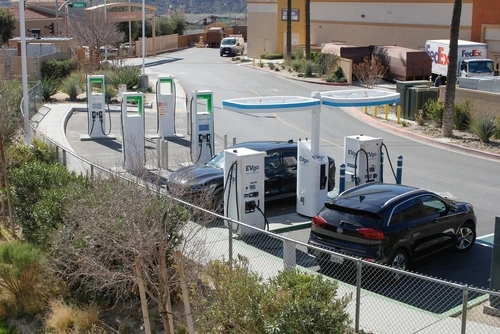
With electric vehicle (EV) ownership growing across the US, as well as other developed nations, a new report by Yardi Matrix has highlighted which cities have the best infrastructure in place to transition away from fossil-fuel-powered automotives.

Across the entire US, there are now some three million EVs on the road. According to the report, California leads the way with more than 878,000 registered EVs, which is almost a third of the national fleet.
Florida and Texas follow in second and third place, with 127,800 and 111,500 EVs respectively, but they still have a long way to go to match the pace set by the west coast states.
As more EVs enter the market, questions about mass adoption preparedness are raised. Yardi Matrix analysed more than 100 of the largest metropolitan areas and ranked the infrastructure of each for EV-friendliness, using criteria such as the number of EVs, public chargers, electricity cost (eGallon), infrastructure challenges, clean energy, EV insurance costs and local incentives, for example.
Top metros for EV infrastructure
Seattle is the top metro area for EV infrastructure, according to the report, which cites a combination of factors including the high number of EVs, charging options, and clean energy production.
Overall, the west coast dominates the EV landscape, with 15 western hubs landing in the top 20 best places for EVs. Only Boston and Baltimore stand out on the east coast, with Miami being the only major green spot in the southern US. Chicago, Dalla and Denver stood out on the index for the more central states.
The Los Angeles-Long Beach-Anaheim metro area has the most EVs on its roads according to the report, with 290,000 registered cars. The metro with the lowest number of EVs is Jackson with only 480. The biggest increase in EV purchases (almost three times more in 2021 than 2020) was registered in two Oklahoma metros: Tulsa and Oklahoma City.
The San Jose-Sunnyvale-Santa Clara metro area has the most public EV charging stations per 1,000 people (2.2). The fewest charging stations among the metros analysed were in McAllen-Edinburg-Mission (0.04/1,000 people).
San Jose-Sunnyvale-Santa Clara has the highest percentage (10.3%) of multifamily buildings upgraded with EV infrastructure. New Haven-Milford's infrastructure has seen the biggest increase in installing EV chargers for multifamily buildings (160.6%), but still only 2.3% of multifamily buildings provide this type of amenity here.
San Jose also top the index for metro areas with the largest share of rentals that have EV charging stations.
As a state, California provides the most incentives and help in terms of EV adoption, with more than double the initiatives of the runner-up states, New York and Colorado. On the other end of the spectrum, Arkansas and West Virginia are lagging in the incentives department.
North Carolina has the cheapest monthly payment for EV insurance at $105, while the most expensive premium is paid in Florida at $313 per month, according to the report.
"The electric car movement is gaining momentum, but it isn’t without its challenges," said Doug Ressler, business intelligence manager at Yardi Matrix. "The high price of an EV – although brought down by incentives now – range and charging stations still pose some problems. However, with the expansion of the charging network – including in apartment buildings – and the gradual lowering of the EV price, buying and using an EV can become mainstream in the foreseeable future.”
[Read more: ULEZ and beyond: The nuanced benefits of owning an electric vehicle]






